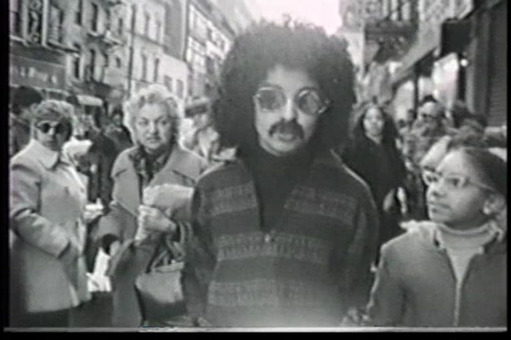Thanks
to the avant-garde female artists of America, we have made strides towards
reaching gender equality and expressing the depth of social and political issues
embedded in being a female and female artist. Female artists created new and
uncommon forms of art that grasped the attention of societal masses. The
contemporary movement, including many forms of avant-garde art, was a period of
time for the mid 1900’s to the present. It was “[m]odeled on the civil rights
and anti-war movements of the 1960’s[.] [T]he contemporary feminist movement in
the arts emphasized political activism, group collaboration and an art practice
centered around the personal and collective experiences of women” (Chadwick 8).
Feminists in this period took an
introspective approach into discovering what exactly it was about the
relationship between the genders that deemed women’s artwork and artist’s
inferior to men and granted them little to no credit. These prolific and tenacious
female artists included the likes of performance artists such as: Marina
Abramovic, Yoko Ono, Adrian Piper and conceptual artists such as Jenny Holzer
and Barbara Kruger who’s impact on the contemporary art and feminist movement we
will further discuss in this post.
Marina Abramovic, perhaps gone too
soon, dead at the age of 67 in the year of 2013, was often considered the mother
of performance art. Abramovic’s performance art frequently involved her
injuring herself while testing the precincts of the relationship between the artist/performer
(herself) and the audience. Her “Rhythm” series was a of performances that were
monumental in her career. “Rhythm 0 (1974)” of this series was one which I
thought was profound. In this performance, Abramovic wanted to test her
audience by seeing how aggressive and how vulnerably they would treat her if
there were no restrictions or consequences. Abramovic stood idol in front of an
audience who she allowed to do anything to anything to by utilizing 72 tools
including many that could harm her. By the end of the performance she was cut
many times, stripped and treated in a sexually aggressive manner by many men.
She was able to expose the violent nature of how many men view women. Marina
speaks about her experience in being the subject of her performance and the courage
it took her in retrospect in this video below.
Yoko Ono is another courageous
performance artist of the contemporary period who’s work was able to expose the
flawed nature of how men viewed women. In her performance “Cut Piece” (1964)
Yoko allowed her audience to cut her clothes off with a pair of scissors in
order to test their ability to respect her boundaries as a woman.
Unfortunately, many men began to rip her clothes apart and got frustrated when
articles of clothing were difficult to rip. They viewed Yoko as a sexual object
rather than an individual and even went on to cut her bra off. Their aggressive
and degrading acts in this performance made a large issue deeply rooted in
society visible. Yoko Ono’s performance can be watched below.
Female performance artists also incorporated
the exploration of racial issues into their exploration of gender; they
explored identity as a whole. Adrian Piper is an artist who has accomplished
this feat. In her performance “They Mythic Being”, performed in intervals
between 1973 to 1975, she poses as a black, working class man. She wears an
afro, a mustache and male attire while walking through the streets of Cambridge,
Massachusetts and New York City. She attempts to discover the social implications
that come with being an African American male and also ogle’s women in order to
get a first-hand understanding of how many of these women feel and react.
Adrian Piper explains “The idea is very much to see what would happen if there
was a being who had exactly my history only a completely different visual
appearance to the rest of society” .
Conceptual art emerged with the
contemporary movement, in which the idea and meaning behind the art is valued more
than the finished product itself. Jenny Holzer’s work embodied conceptual art,
specifically her piece “Truism” written in a series between 1978 and 1987. In
these “Truisms” she expressed maxims, short but thoughtful sentences that allow
the audience reflect deeply. Through these maxims, she addresses issues of sex,
race, class and a wide range of topics and hopes to engage her audience and
receive a wide variety of responses. In one of her truisms, she writes “A
rapist died because he left his victim wishing she was dead”. An ambivalent,
yet thought provoking statement about a prominent issue of gender and male
dominance. Here is an excerpt of one her truisms.
Barbara Kruger, a well known
contemporary artist native to Newark and born in 1954, directly addresses
feminist issues through conceptual art. Barbara Kruger utilizes the medium of
magazine-like strips of text and black and white photographs. She places the
text over the images and creates a poster that can be placed in areas of high
traffic in a manner similar to advertisments. In her Untitled piece of 1981,
she places a female statue with her face to the side and places “Your gaze hits
the side of my face on it’s side”. She shows how the male gaze makes women feel
like trapped and not an individual but a sexually appealing object through the
placement of the female statue.
Works Cited
Reisman, Sara. “The Intersectional Self.” The 8th Floor, 18 Feb. 2017,
Chadwick, Whitney. Women,
Art, and Society. 4th Edition. 2007



No comments:
Post a Comment